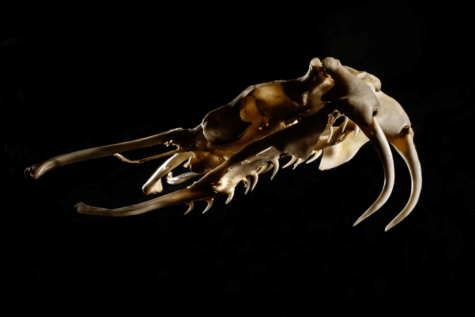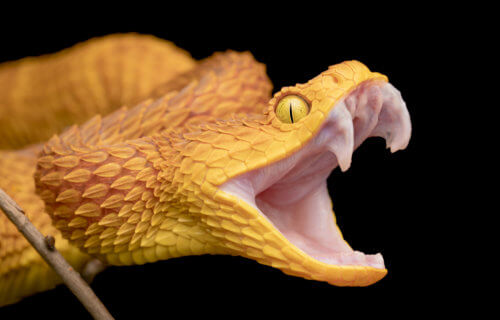CHAMPAIGN, Ill. — Using fangs, claws, and bee stingers as inspiration, scientists say these dangerous aspects of nature may help them create new types of needles for vaccines, as well as protective materials against these kinds of puncture wounds.
Few structures in nature generate more terror than a viper’s fangs. The long sharp teeth strike like hypodermic syringes. Now, a team from the University of Illinois Urbana-Champaign have worked out a bite’s kinetics — the energy due to the motion of an animal.
The mathematical model did the same for bee stings, claws, and other biological weapons. The findings shed fresh light on many types of puncturing tools, opening the door to new piercing materials and protective garments.
Some snakes, such as vipers, rely on speed to bite prey. They can lash out at three meters per second — a blink of an eye to humans. A jellyfish’s stinging cells, nematocysts, are almost seven orders of magnitude smaller than a fang and propel at a blistering 38 meters per second.
“The idea behind this was to come up with a quantitative framework for comparing a variety of biological puncture systems with each other,” says Philip Anderson, a University of Illinois Urbana-Champaign professor of evolution, ecology and behavior, in a media release. “An initial question of this research was how do we even measure these different systems to make them comparable.”

How do animals deploy these weapons in nature?
Snakes use their needle-like teeth to inject deadly venom. They have evolved to suit individual species’ preferred prey — from hard-shelled crabs to furry mammals.
“It’s a challenging problem to predict the properties of biological systems,” says postdoctoral researcher and co-author Bingyang Zhang.
Some snakes focus on mice or hunt reptiles, including other snakes. There are also generalists, which eat almost anything they can fit in their mouths. Animals and plants deploy a variety of strategies for stabbing prey or defending themselves from predators. Even those that use similar strategies alter tools to meet specific needs. Their targets also differ.
“In vipers, for example, some bite mammals, which means they must puncture through soft tissues encased in skin, while others target reptiles, which have scales, making them stiffer and harder to pierce,” say Anderson, who studies the mechanics and energetics of biological puncturing systems.
Parasitic wasps, for instance, use a flexible tube, an ovipositor, to inject eggs into their hosts. They can burrow through the hides of caterpillars, but also can penetrate fruit or even wood, Prof. Anderson says.
Calculating kinetic energy unlocks a fang’s potential
Key factors were included in any calculations of the energetics involved to develop a model that can be applied to a variety of systems. They included changes in the kinetic energy as a puncturing tool is used, along with taking into account the material properties of the target tissue.
It involved describing the initial kinetic energy and opening up new surfaces as the fracture propagates. The technique also considers frictional resistance and elasticity. Estimates were aimed at tapered tools which are common in biological systems, the researchers explain.
The model described in the Journal of the Royal Society Interface is being deployed to mimic viper fangs, stingray spines, and parasitoid wasp ovipositors.
“If we know the morphology or the shape of the damage created by a puncture tool, we can use this model to predict how much energy was expended during a puncture scenario,” Zhang explains. “Or we can predict different aspects of the material’s property, for example, how it will fracture, which will be useful in both engineering and biological applications.”
High-velocity impacts ensure more of the kinetic energy is transferred into tearing the skin surface rather than simply deforming it. It’s the first step to understanding how nature has developed teeth, claws, and tentacles to hunt or protect itself.
“Anyone who has had a bee sting or pricked their finger on a rose thorn is familiar with biological puncture,” Dr. Zhang adds, according to a statement by SWNS. “Organisms use various tools – such as stingers, teeth or spines – to puncture other organisms for everything from prey capture to defense to reproduction. While highly variable in sizes and dynamics, underlying physical rules dictate how these systems successfully puncture.”
“We present a mathematical model to formalize energy expenditure during puncture. The theoretical framework compares the performance of insect stingers, rose thorns, snake fangs or other puncture systems on a level playing field – allowing future work to examine how physical laws influence their evolution,” the researchers conclude.
South West News Service writer Mark Waghorn contributed to this report.


I puncture my wife with my man-stamen.